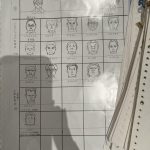
Orders for March far exceeded analysts’ expectations, which forecast a modest 0.7% increase, according to the consensus published by the specialized site briefing.com.
Orders for items ranging from toasters to airplanes that must last three years or more increased, driven by the volatile category of civil aircraft, which shot up 78.4% after falling 8.4% in February.
“Orders were higher than expected but remained weak at the end of the first quarter, as were deliveries,” HFE chief economist Rubeela Farooqi said in a note.
Orders for equipment, appliances and electrical components increase
The US Commerce Department detailed that orders for non-defense capital goods excluding aircraft – a closely watched indicator of business spending plans – fell 0.4% last month.
Data for February was revised down to show core capital goods orders slipping 0.7%, instead of the previously announced 0.1%. Economists polled by Reuters had expected a decline of 0.1%.
Orders for electrical equipment, appliances and components increased 0.8%, while stocks for computers and electronics increased 1.9%. Orders for machinery, primary metals and fabricated metal products barely increased.
Business investment is threatened by the credit crunch following the recent financial market turbulence, which could make financing less accessible for small businesses and households. That is spreading to the manufacturing industry.
The manufacturing sector, which accounts for 11.3% of the country’s economy, is reeling after the fastest interest rate hike campaign by the Federal Reserve since the 1980s.
Spending is also shifting from goods to services, while sluggish global demand is weighing on exports. The inventory cycle is also changing, and companies are replenishing their stocks at a slower rate than demand is cooling.
Core capital goods shipments decreased 0.4% in March, after declining 0.4% in February. The underlying capital goods shipments are used to calculate spending on capital goods in the Gross Domestic Product measure. In the fourth quarter, business spending on capital goods posted its biggest slump in two and a half years.
weak business investment
Most economists expect a slight decline when the government publishes its advance estimate of GDP for the first quarter on Thursday. Business spending on equipment fell at the fastest pace in two and a half years in the fourth quarter.
According to a Reuters poll of economists, GDP probably rose at an annualized rate of 2% in the January-March quarter. The economy grew at a rate of 2.6% in the fourth quarter.
Expectations of another quarter of strong GDP growth were bolstered by a second report from the Commerce Department on Wednesday that showed the goods trade deficit narrowed 8.1% to $84.6 billion last month.
Merchandise exports rose $4.9 billion to $172.7 billion, driven by industrial supplies, including crude oil, motor vehicles and consumer goods.
But food exports fell 4.5%. Imports of goods fell $2.5 billion to $257.3 billion, dragged down by declines in industrial supplies, capital goods and other goods. Imports of consumer goods increased 2.4%.
The Commerce Department also reported that wholesale inventories rose 0.1% in March, matching the February rise. Retail inventories gained 0.7% after rising 0.3% in the prior month.
Excluding motor vehicles, retail inventories rebounded 0.4% after falling 0.1% in February. This component enters into the calculation of GDP. Inventory investment was the biggest driver of GDP growth in the fourth quarter.
With information from AFP and Reuters.














